
|
|
|
|
|
|
|
|
|
|
|
|
|
|
|
|
|
|
|
|
|
|
|
|
|
|
|
|
|
|
Search by Keyword
Learn About Golf Instruction and Training
Our Instruction Process:
Understanding the Value of this Golf Instruction Process
Advantages for You
The key advantages of these training programs are:
- You receive proven, successful golf instruction focused at your needs. It will help you become a better golfer.
- Take the training at your home or anywhere you have Internet access. Many of the learning exercises can be conducted in a small yard or park area. Some can be conducted indoors.
- Techniques, learning exercises, and discussion points are clearly demonstrated in the videos.
- Print and keep your personal student booklets. They clearly discuss and demonstrate all of the techniques and recommendations provided in the training course, and include worksheet templates for the learning exercises. UTILIZE YOUR BOOKLETS AND LEARNING EXERCISES TO CONTINUALLY IMPROVE.
- SAVE MONEY! Each instructional course contains numerous lessons that would cost hundreds of dollars if taken as individual golf lessons.
How e-learning / online training applies to golf instruction
E-learning is not a new concept. It has been used since shortly after personal computers became a mainstay in the workplace and the home.
For example, thick, printed instruction manuals that once were packaged with computer software have been replaced with either direct online instruction over the Internet, or a computer disc (CD or DVD) that provides the instruction / information in computer files. Such training may be considered an evolution of video-based training, (now often on DVD), which is still flourishing in the workplace for certain regulatory (health and safety, OSHA, etc.) and technical subjects.
Now, there are thousands of online / e-learning training programs. Everything from sales and marketing, accounting, human resource development, product quality (e.g., Six Sigma), computer programming, and software development and software use, to consumer-focused learning programs such as artistry, home decorating, gardening, carpentry, etc.Most universities and colleges, and now many high schools, have complete courses that are taught via an e-learning platform.
Synchronous and Asynchronous Instruction
There are two principle types of e-learning, (1) synchronous and (2) asynchronous.
Synchronous e-learning is used heavily by universities, as their professors or lecturers provide the classroom instruction while students log in via the Internet and watch or participate. Questions and answers are managed through a chat-like process. Homework assignments or research papers are submitted to the instructor, or the teaching assistant, via e-mail.Example: Synchronous e-learning
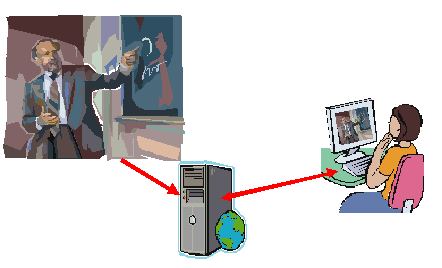
Businesses have used similar programs for important meetings, and for news or press release announcements.
Asynchronous e-learning is instruction without the immediate presence of a “live” instructor or presenter. A video re-broadcast of a lecture over the Internet could be considered as an asynchronous e-learning class. The class material is the same but the instructor or lecturer is not present to respond to questions.
The advantages in the university or school setting are that the asynchronous class can be taken at any time instead of only the time that the instructor is presenting the material, it can be archived for future presentations, and the delivery of the class material is consistent, that is, always the same. The disadvantage might be that the instructor is not present to answer student questions.
A common example of asynchronous e-learning is the typical software training that is now provided with most computer programs. You load the program via a CD, and then if you have questions on how to use it you click on a “Help” icon.
That icon is linked to an Internet site, or to a file on a CD / DVD, where you can read through how to complete the task that you need to do. There may even be a graphic, or a slide presentation, or a video that demonstrates the process or leads you along on how to complete the task.
Example: Asynchronous e-learning 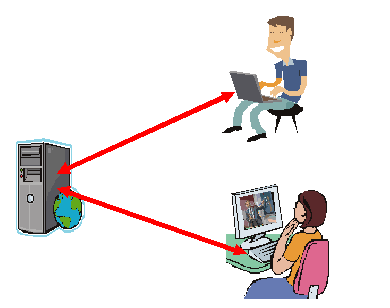
Business and technical asynchronous e-learning classes require enhancements that keep the student’s interest and attention, and clearly demonstrate how to complete a process or achieve the desired goal or developed skill.
The more technical or skill oriented the training, the more enhancements and/or instructional design elements are required in order for the student to understand the subject and master the skill.
For example, if the training was for learning how to replace the seals on a pump so it does not leak, the student would need to know specific details about the pump and how to access the seal area, the seal seat, the seal material and thickness, the tools needed for the task, the torque or compression required to reset the seals without over-torque, and how to re-assemble the pump.
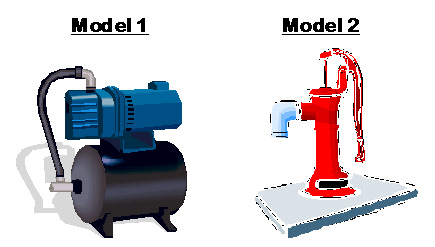
The e-learning training course would need to include clearly written text, clear and detailed graphics, a video or slide presentation on various pump models demonstrating exactly how to complete the task for each model.
It would likely have a discussion on what to avoid to minimize difficulty or poor workmanship, and then some type of quiz or thinking instrument (test or game scenario) that causes the student to think about specific critical elements of the task and be assured that the student understands how to complete the task.
There may also be some FAQ in the form of faults and fixes, or possible mistakes to avoid, etc.
As with all training, however, whether it is instructor-led, synchronous, or asynchronous, the proof of the value of the instruction is in the results achieved by each student.
For technical and skill-based training, the student must be able to demonstrate that he/she can complete the task and do so with an acceptable level of consistency. Some workforce technical training requires 90% or better capability.
Critical tasks (health care, regulatory compliance, etc.) require 100% capability. A high quality, stand-alone asynchronous e-learning training course is challenging and costly to produce.
Examples of more technically focused courses include subjects such as”, “Design of Experiments”, “Geometric Dimensioning and Tolerancing”, and, “Industrial Wastewater Treatment Processing”.
Skill Development Training
Asynchronous and synchronous e-learning classes can be used to help a student develop a technical skill. In an instructor-led course, or a synchronous online training course, the instructor can demonstrate the technique or skill. The student will then need to either repeat the technique in the classroom, work center, or laboratory, or in the workplace or at home or wherever he/she might be.
In an asynchronous e-learning class, the student reads information about a technique, or listens to it in lecture form, or typically sees a demonstration of the technique or activity, and then is asked to perform the technique or activity, either at the work center, or laboratory, or at home.
Because the instructor is not there to answer questions or immediately review the performance, the asynchronous e-learning instruction must include learning elements to help assure that the student (1) thoroughly understands the process, and (2) is capable of performing the technique in an acceptable manner.
These learning elements may include answers to anticipated relevant questions, examples, case studies, graphics, pictures, videos, quizzes, and specific learning exercises that will help the student develop the skill, together with a process for self-measurement of progress or accomplishment.
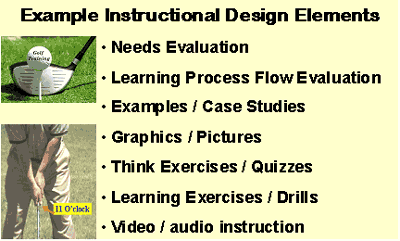
The important result in all types of technical learning is that the student be able to immediately apply the new skill.
If the student takes training now, and then does not use or apply the new skill for several months or longer, it is unlikely that the skill will be correctly performed. The result is unacceptable capability, regardless if this in the workplace, at home, or, in the case of golf instruction, on the golf course.
In the business world, such a gap in application time is considered wasted time and wasted money. Many companies will not fund technical or skill-based training that cannot be immediately applied.
How this relates to golf instruction
The learning process for golf is the same as that for any technical or skill-based activity.
Example: Asynchronous e-learning for Golf
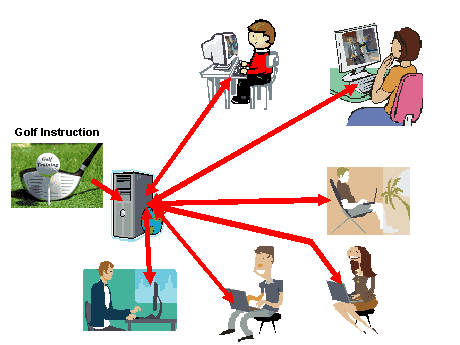
For a learning program to be effective, it must include certain elements that provide the students with the knowledge and capability they need to complete the task. Additionally, the training must be needs based.
For example, you would not teach a beginning golfer how to hit a “flop shot”, or even a “draw”, before they have learned how to grip the club and make an acceptable swing.
The beginner “needs” to have certain knowledge and ability before he/she can proceed to the more challenging techniques. It’s like the need to learn basic arithmetic before attempting long division, before attempting, linear algebra equations. There are some basic building blocks that must be learned first, and skills that the beginner needs to be able to consistently complete, before he/she should be expected to work on the more advanced skills.
An actual skill is not developed until the student can routinely perform the task or technique.
Unfortunately, many golfers who have played golf for several years or longer have not developed the basic skills that they need to consistently strike the ball well and score to their potential.
More challenging elements of the overall work or process can only be consistently performed after the basic skills can be performed and positive results are routinely achievable.
If you were to go to a golf school, or take a golf lesson from proficient golf teacher / instructor, he/she would not simply show you a technique and then leave you on your own.
You would receive a drill or learning exercise to practice so that the technique or shot skill becomes somewhat permanent.
Example:
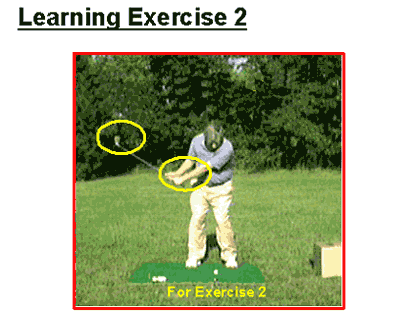
You would likely also receive a goal or expectation to achieve, and some type of process for measuring your personal improvement. You would develop both the technical “how-to” for that specific technique, and also the “feel” for that shot or technique.
Adequately designed asynchronous or synchronous golf instruction provides a positive golf learning process that has all of the elements that help a student learn to play golf, and helps an experienced golfer improve upon a skill and his/her overall golf ability.
This type of training can provide consistent, well designed instruction, and is a proven process for helping a student learn and develop a skill and then retain that skill.
The System We Use for Golf Instruction Courses
The golf instruction courses that we provide are delivered in an asynchronous manner, like an online college class or vocational school class, and are similar to, but likely more comprehensive than, a golf lesson from your local professional golf teacher / instructor.
That is, each course is a designed training course. The course materials include access to online student booklets and video demonstrations, and the courses typically have “homework” in the form of learning exercises, which are discussed in the booklets and/or videos.
Example
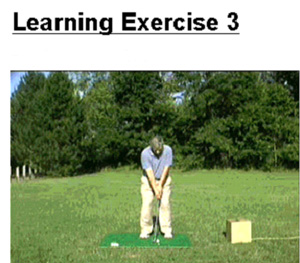
Most courses also provide a process for establishing personal improvement goals and for measuring your progress. You will learn the technical / mechanical “how-to” of a shot or technique, as well as develop a “feel” for that technique. You will learn how to understand what may have gone wrong when you have a swing fault or shot fault, and you will have the tools that allow you to make improvements and measure your own progress.
Like a vocational school course, or seminar training, each course has a timeframe in which you begin the training, and then you have adequate time to complete the training, including the learning exercises, before the course ends.
The training was placed in this format because:
(1) It is a format that provides most people a level of comfort, (2) It is best for students to work at (a) learning a skill, (b) practicing the skill, (c) and then applying the skill within a timely manner, (3) It provides an inexpensive alternative compared to conventional golf learning techniques, and (4) Most importantly, it works. You will improve your golfing ability.
This process provides a learning experience that leads to retaining the skills that you have learned. The basic courses follow a building block process. Your proficiency in the basic skills, (golf grip, set-up, routine, golf swing technique), help you become more proficient at the more challenging skills (making specific golf shots, improving accuracy, getting more distance, etc.).
As you will see, when you complete these golf training courses, you will have developed the skill that you desired and you will have more fun when you practice and play golf.
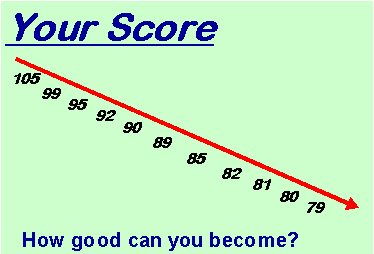
After you complete one of our golf training courses you can print a personal Completion Certificate for that course directly from your student page. As a student, you will also have access to the “Forum”, a chat-like process for asking golf-related questions among other students (no commercial or product endorsement use allowed).
Summary
Some people might consider this brief discussion on e-learning actual e-learning. Although it does provide information that many people may not have been aware of, it is not "qualified" e-learning. There are no tools to help assure that you have actually learned anything.
For example, you did not develop a draft course outline for an e-learning class or course. You did not assess or list possible case studies, examples, or graphics that you might need to help a student understand a topic or develop a skill. You were not quizzed on the subject matter of the discussion. You did not have to apply the skill or demonstrate competence in order to move up to the next skill level. As you can see, all information presented over the Internet does not qualify as true e-learning.
A well designed training program, whether it be an e-learning program or a conventional instructor-led training course, has learning elements that help the student learn and retain the information provided, and develop the ability to adequately apply the skill or technique that is desired.
We hope this information was of interest to you.
Thank you for your interest in these golf instruction courses and our training process.
Note: All prices in US Dollars
Secure Credit Card Payment
 |